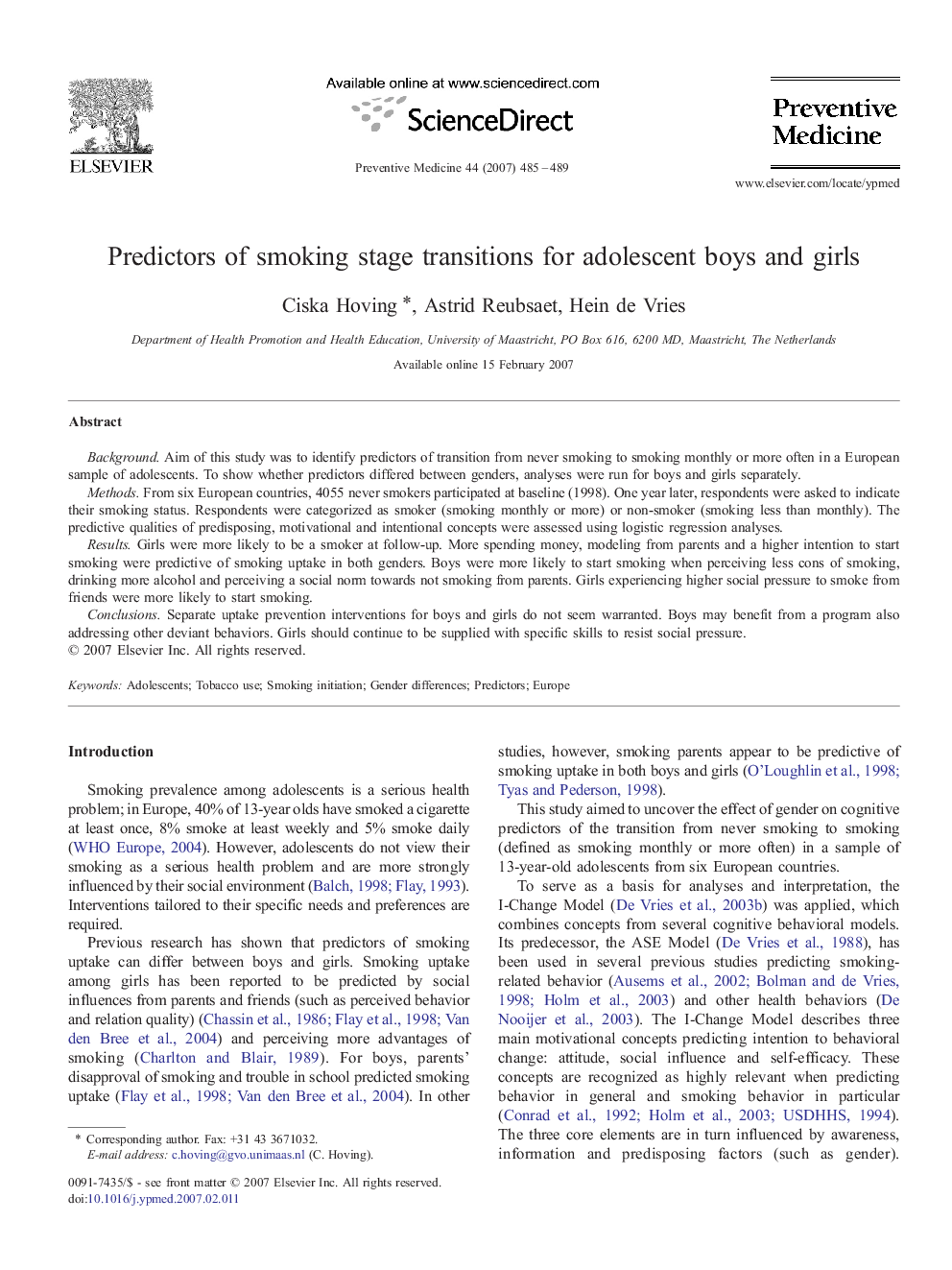| Article ID | Journal | Published Year | Pages | File Type |
|---|---|---|---|---|
| 3102081 | Preventive Medicine | 2007 | 5 Pages |
Background.Aim of this study was to identify predictors of transition from never smoking to smoking monthly or more often in a European sample of adolescents. To show whether predictors differed between genders, analyses were run for boys and girls separately.Methods.From six European countries, 4055 never smokers participated at baseline (1998). One year later, respondents were asked to indicate their smoking status. Respondents were categorized as smoker (smoking monthly or more) or non-smoker (smoking less than monthly). The predictive qualities of predisposing, motivational and intentional concepts were assessed using logistic regression analyses.Results.Girls were more likely to be a smoker at follow-up. More spending money, modeling from parents and a higher intention to start smoking were predictive of smoking uptake in both genders. Boys were more likely to start smoking when perceiving less cons of smoking, drinking more alcohol and perceiving a social norm towards not smoking from parents. Girls experiencing higher social pressure to smoke from friends were more likely to start smoking.Conclusions.Separate uptake prevention interventions for boys and girls do not seem warranted. Boys may benefit from a program also addressing other deviant behaviors. Girls should continue to be supplied with specific skills to resist social pressure.
